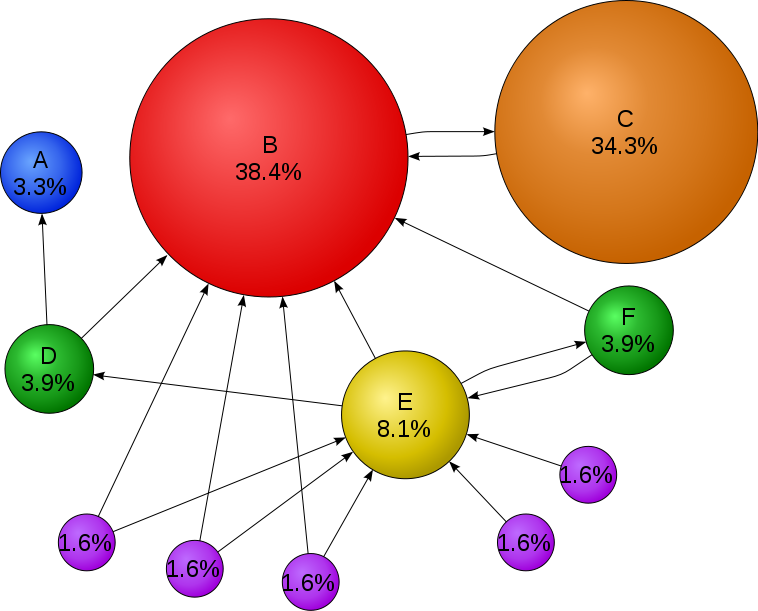
Grant cycles are, for the most part, a bane of a researcher’s existence. We spend countless wasted hours writing, editing, submitting, reviewing, and hoping for funding. Associate Professor Johan Bollen at Indiana University’s School of Informatics and his colleagues have come up with an interesting supplement to the traditional peer-review system that can streamline the funding allocation system so that researchers can spend more time researching and less time pleading their case.
Bollen and his colleagues in informatics and library sciences envision a system that utilizes a heuristic similar to Google PageRank. PageRank defines the importance of a page in terms of the importance of the pages that it received links from. For example, a Google’s algorithm rates a page as more valuable when it has better resources that it links to, and this is recognized by the quality of links that the cited page has as well. Researchers often follow a similar line of thinking; when a paper is cited by other highly-cited papers it should be held in higher regard, as well as the researchers who wrote the paper. This is because we intuitively understand that it is important for a work to be recognized by other important research.
This natural way of ranking is what Bollen and colleagues uses as a core tenement to their proposal. Fundamentally, it works like this:
Seed money goes into a pool, which is distributed evenly to all researchers to use unconditionally for their research. Each year, however, they individually have to donate a given fraction of everything they receive to other researchers. This process could involve no more than going to a website and logging in to indicate which other researchers receives how much of the donated fraction.
During a phone interview, Bollen explained how one might extend this system by including “programmatic” nodes that allow you to refine your own grant cycle preferences. For instance, you might have a strong interest in cancer research, so in your profile you could set 10% of your reallocation funds to your favourite cancer research institute, then allocate the remaining 90% to individuals whose work you specifically want to support.
The idea behind this system is to streamline funding allocations, but it could also potentially limit political biases by giving scientists a chance to work on projects that they prefer, not because that’s where the incentives are. It also has the potential of widening the research base for independent researchers and inventors that would like to play on the same financial, if not social, ground.
Like any system, it’s not perfect. Bollen brought up the possibility for conflicts of interest and collusion in our chat. However, as in peer review, there are work-arounds for these potential problems. For example, researchers could be blocked from reallocating money to their co-authors. In my mind, this system has a lot of potential for streamlining the grant cycles once we give it a shot on a smaller scale and work out the bugs in the system.
All in all, it’s a fascinating concept that could have great benefits and streamlining effects for the grant funding cycle. What are your thoughts? Please add your comments below.
